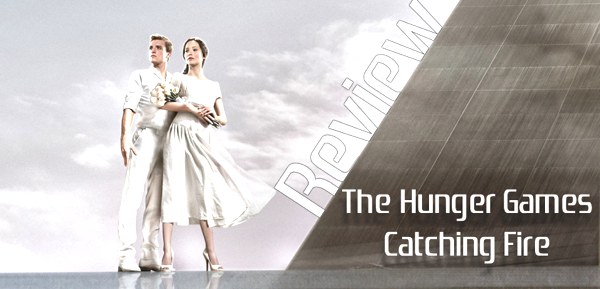 It’s important to review the big popular things, because that will get more eyes on me, more eyes on my employer of SonyRumors, and more feedback so I can get better at this trade. However, it’s a foregone conclusion that The Hunger Games: Catching Fire will be the biggest movie in the world for many days ahead. And my personal opinion of whether it deserves to be number one or if anyone should see it at all will have zero effect on that. I tore Thor apart and they still made more money in a day than I will probably in my lifetime. I might as well be trying to sell tofu at a butcher shop. But there are people who have not yet gone. People who have waited to avoid the huge crowds, or were busy on opening weekend. People who for one reason or another have yet to drop their hard earned dollars. These are the people who read that article about how the meat industry works and stare at the butcher shop door, wondering whether to support that. And there I stand, tofu in hand, smiling brightly in the way. Will I open the door for them or will I do my best to convince them of the dangers of bacon.
It’s important to review the big popular things, because that will get more eyes on me, more eyes on my employer of SonyRumors, and more feedback so I can get better at this trade. However, it’s a foregone conclusion that The Hunger Games: Catching Fire will be the biggest movie in the world for many days ahead. And my personal opinion of whether it deserves to be number one or if anyone should see it at all will have zero effect on that. I tore Thor apart and they still made more money in a day than I will probably in my lifetime. I might as well be trying to sell tofu at a butcher shop. But there are people who have not yet gone. People who have waited to avoid the huge crowds, or were busy on opening weekend. People who for one reason or another have yet to drop their hard earned dollars. These are the people who read that article about how the meat industry works and stare at the butcher shop door, wondering whether to support that. And there I stand, tofu in hand, smiling brightly in the way. Will I open the door for them or will I do my best to convince them of the dangers of bacon.
As far as The Hunger Games: Catching Fire is concerned… how do you like your pork?
If the sequel is a chop, then the first film was more of a BLT. I liked the art direction and the concept of the story, but I thought it was overwrought, pretty random, with animated effects that at times looked downright bad. It was okay. Not horrible. I was partially effected from having seen it opening day, at midnight, in a packed house, with anti-social teenagers sitting behind me. They threw candy and said vulgar things to prove to their friends how talented and funny they were. So maybe I was in a bad mood.
I can say, between films, a lot has improved. Adding Phillip Seymour Hoffman to any film makes it better almost instantly. But everyone is strong. While Donald Sutherland is great as President Snow – equal parts power loving, fear zealot and believer in the theory of their society created peace, the big surprise for me is Woody Harrelson. I don’t have a particular problem with him in general but I never feel compelled in any way by his performances. I have to say his take on Haymitch Abernathy, former games survivor, is the most I’ve ever seen him disappear into a role. He’s an alcoholic for no small reason and despite his hateful, despondent exterior, is quite the savvy thinking man with a real streak of compassion for humanity and a better world.
But let’s not get ahead of ourselves.
Catching Fire is a broad stroke type of film. It’s approach to telling the story of a rising resistance movement is not subtle. There is no nuance to this yarn about the plebeian class attempting to fight back against the government who stages a yearly last man standing, game to the death, just to keep them in line. It’s not trying to be subtle though. When Katniss Everdeen survives the first Hunger Games by saving Peeta Mellark, she sparks a movement of defiance among the second class citizens. Her determination to prevent the government from getting their way inspires others to do the same and as we begin Catching Fire, the government is concerned about the outbreaks of resistance. So to squash all hope, it turns up the violence, cracking down immediately on anyone who gets out of line, and also fabricates a new Hunger Games where only previous survivors will compete. Hoffman is brought in as a new game designer (Plutarch Heavensbee), who creates a set of events designed to tarnish Katniss’s image before the public eye, douse all hope and belief in her as motivation for the resistance, and then actually kill her off in the games.
The art direction is as detailed as in the first. The districts of the lower class live day to day as outdoors people, wearing clothes they seemingly made themselves and hunting for their own food. While the upper class wines and dines with the most extreme opulence and excess. The people of the districts all wear grey while the ruling caste spend most of their money on useless things like ever changing hair colors. At one point, during a dinner party is it revealed the rich will force themselves to throw up just so they can keep on tasting all the various foods on display. Like I said, this is not subtle. But it’s effective. This is a story of the have and have nots. Of why income disparity is a bad thing. Of how power and force is a tenuous way to create peace at best. And how wanting everything you can get is not the same as getting everything you want.
The games themselves are about a third or more of the film. Just as violent as ever, the effects this time around are far more convincing. An unexpected fight with monkeys being especially tense and much nicer to look at than the silly dogs the first time around. This movie just looks better than before although I’m a little annoyed with how dark it is. The color palette is grey and and so is the lens filter. Grey all round. Here’s a problem I have. If I were to watch a documentary of a war torn country, I get all the sense of despair and unhappiness, and yet it has actual color. It looks like life because it is life. Modern filmmakers seem to think that the world need to have unnatural coloration, where green is just less green than usual, in order to ram home the despotic vibe of the proceedings. And in the games sequence itself, much takes place at night.
Grey + dark lighting = hard to see for long periods of time. And that is frustrating. Especially since a lot of fun things were going on. The tributes to the games this year are all savvy and work together to figure out how the games themselves actually operate. You have quite the cast of characters. Brawny frat boy types, goth children, genius nerds, counter culture teens, and the ever pretty Katniss and Peeta. You know that someone needs to be the eventual victor so in the case they can’t stop the system, death is coming. It creates a constant sense of tension that pervades though out. This film series grew up fast. It’s far darker in tone. More violent. More in your face. But also far smarter and more interesting.
The mechanisms of The Hunger Games are still seemingly random and capricious: generating whatever nonsense they need to create whatever effect they want. But it works within the confines of this story because the government’s purpose is to not be fair. The whole of society is a manipulation of people to stay in line. And the games are just an extension of that. Random, computer controlled poison fog that has no explanation or origin? No problem. Unexpected, generated monkeys? Bring it on. It works because the government is actually making this up as they go. They are trying to make people act a certain way. It’s not about making sense. It’s about making power. And by the time the movie winds up to it’s inevitable “middle story of a trilogy” ending, you’ll be ready for a break in the tension. I found the ending satisfying and it has me ready for the third installment.
At 146 minutes this story goes by quickly. Feeling more like 120 minutes. It feels like the right length even though it’s longer than you might expect.
Catching Fire is well acted, well thought out, with a good ending, better visuals, and minor problems with art direction I can forgive it for. And so whilst I might try to sell you on tofu for another experience, consider Catching Fire to be a butcher shop of only grass fed, free range animals. If you’re going to eat meat, make it good meat. I just want to know what happens with all the money they rake in for this movie about the dangers of excess.

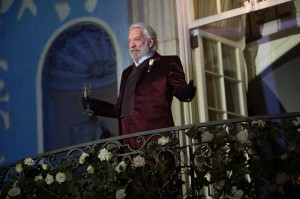
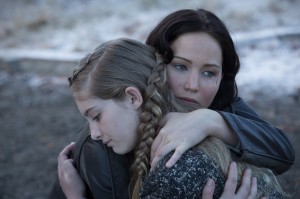
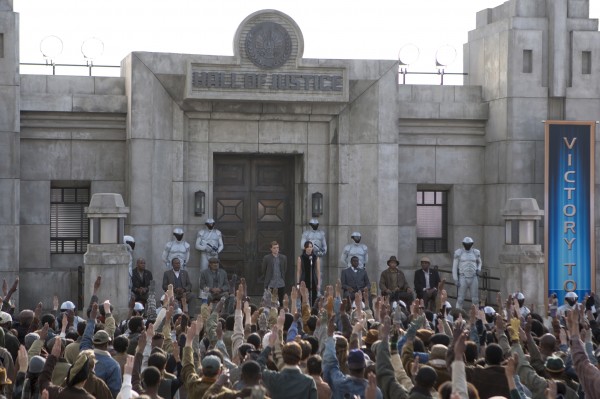
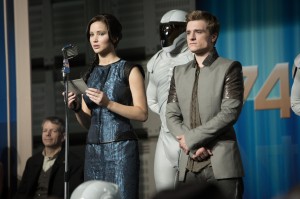
You must be logged in to post a comment.